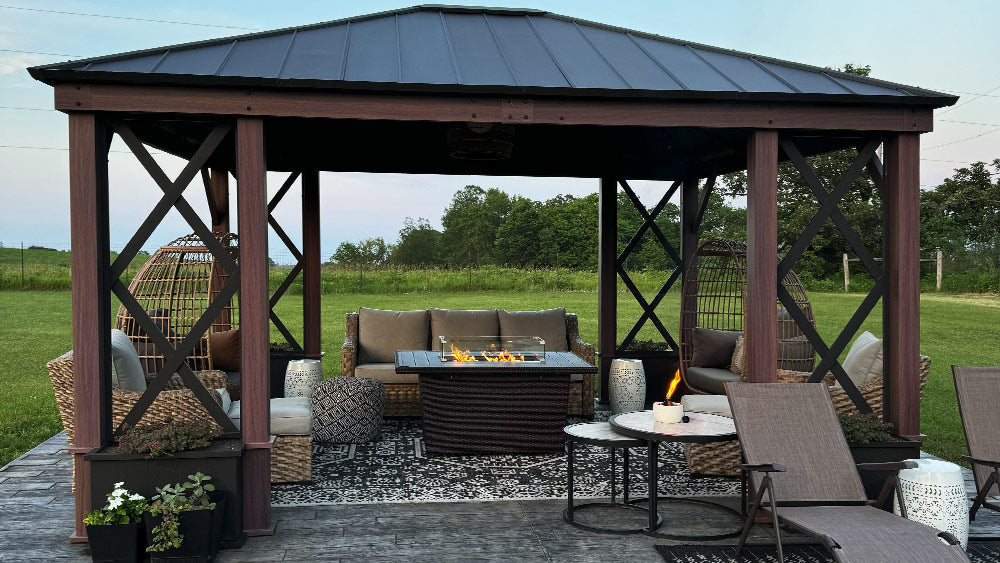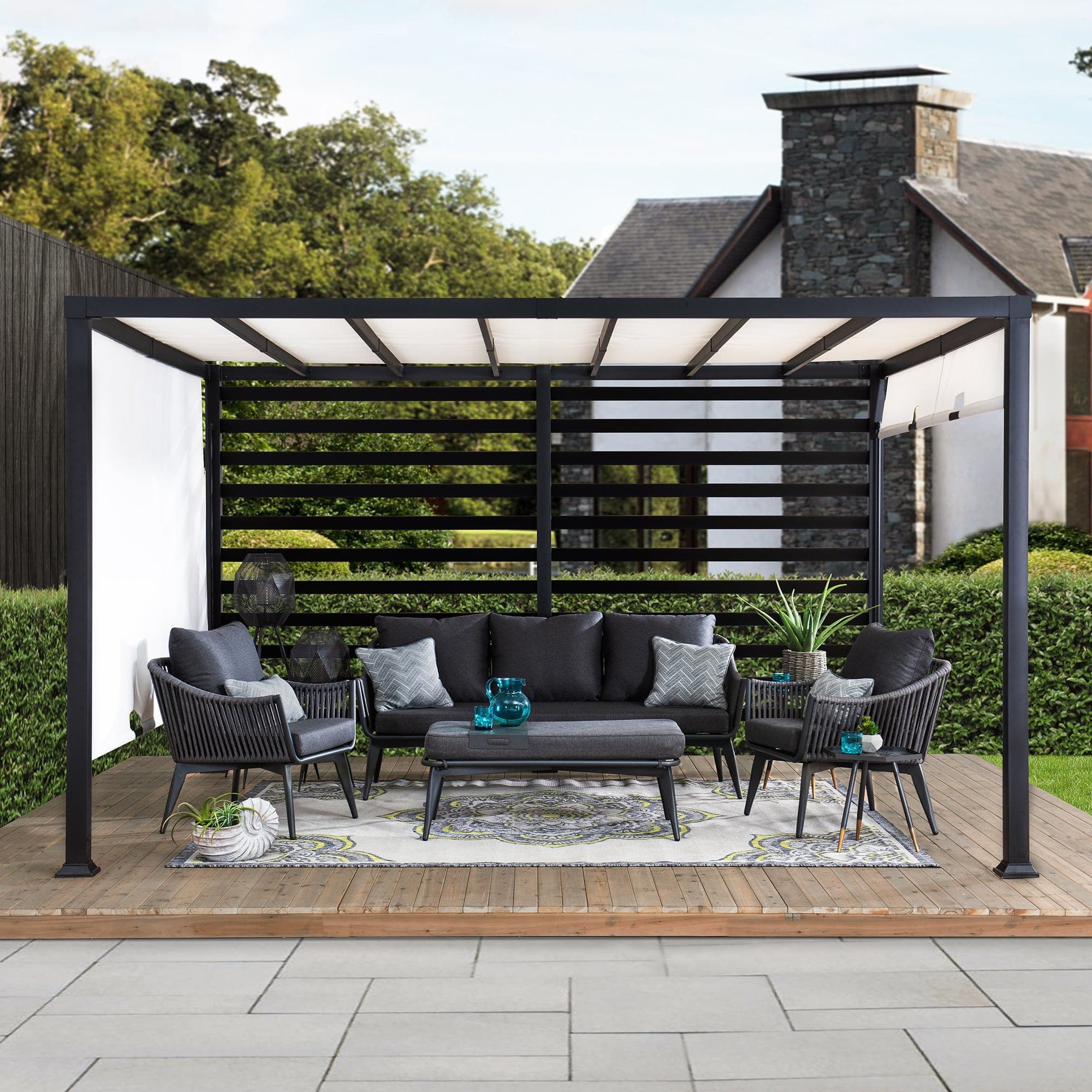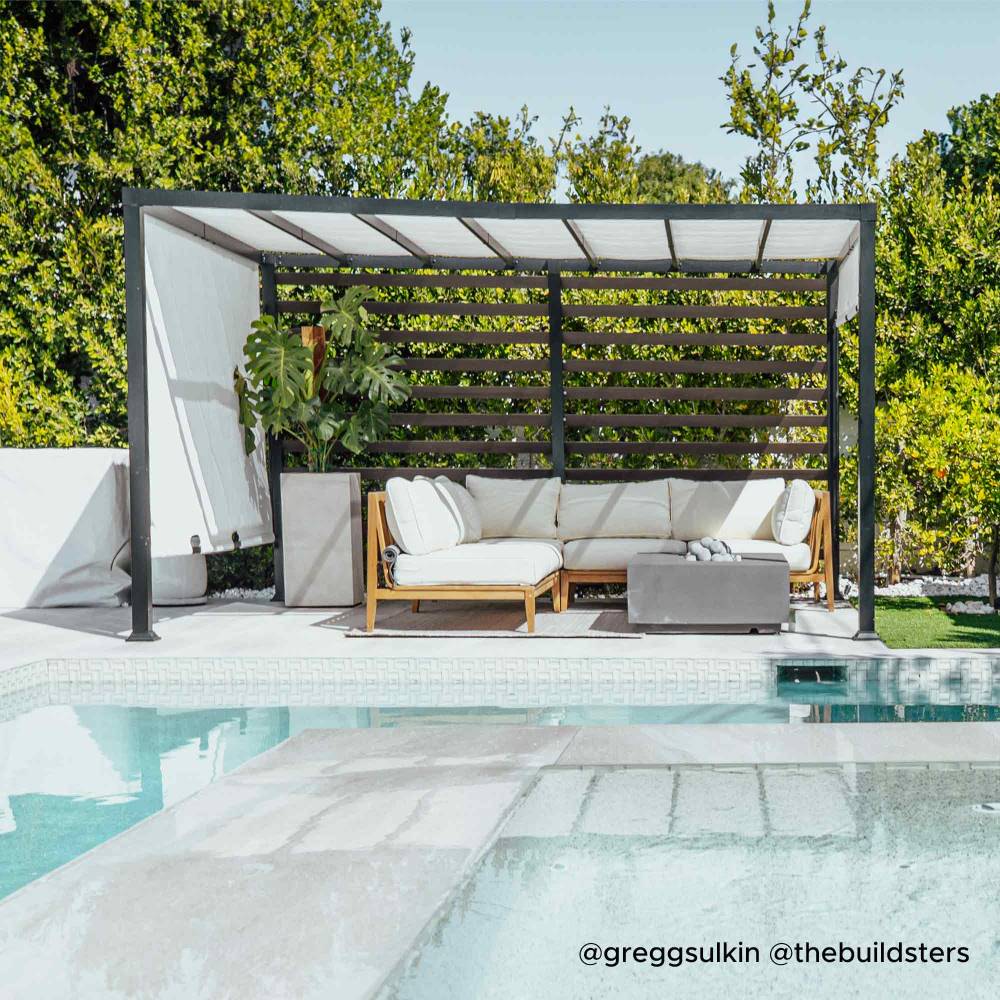Installing a gazebo or outdoor pavilion in your backyard can transform your outdoor space into a functional and stylish retreat. However, securing your structure—especially on pavers—is critical to ensure safety and longevity, particularly in Canada, where weather conditions can range from heavy winds to snowstorms. This blog will guide you through the steps to anchor a gazebo on pavers using methods like gazebo anchor screws and provide tips for a seamless gazebo installation.
Why Is Anchoring a Gazebo Important?
Before diving into the how-to process, it's important to understand why anchoring your gazebo is crucial:
1. Stability
Proper anchoring prevents the structure from shifting or tipping over due to wind or physical movement.
2. Safety
An unanchored gazebo can pose risks, especially during storms or heavy snow.
3. Durability
Anchoring minimizes stress on the structure, reducing wear and tear over time.
Materials You’ll Need for Anchoring a Gazebo on Pavers
The tools and materials needed for the job will depend on the type of gazebo and pavers you’re working with. For most gazebo kits and custom installations, here’s what you’ll need:
Gazebo Anchor Screws: Designed to securely attach the gazebo to the pavers.
Drill: A power drill with a masonry bit for drilling into the pavers.
Anchor Plates: Used to secure the legs of the gazebo to the ground.
Concrete Adhesive: Optional for extra stability.
Paver Weights or Sandbags: An alternative solution for temporary anchoring.
Measuring Tape: To align the gazebo properly.
Level: Ensures the gazebo stands evenly on the patio.
Step-by-Step Guide to Anchoring a Gazebo on Pavers
Step 1: Select the Right Location
Before starting the gazebo installation, choose a suitable location for your gazebo patio. Look for a flat, even area where the structure can sit securely on the pavers. Ensure there’s enough clearance for the gazebo roof and sides, and check for adequate drainage to avoid water pooling.
Step 2: Assemble the Gazebo
If you’re using a gazebo kit, assemble the structure according to the manufacturer’s instructions. Most kits are designed for DIY installation, so you’ll have clear guidelines on attaching the frame and roof. Assemble the gazebo on the pavers but avoid attaching the roof panels until the base is secured to prevent unnecessary movement during anchoring.
Step 3: Mark the Anchor Points
Position the gazebo in its final location and use a pencil or marker to outline where the legs of the gazebo touch the pavers. This will indicate the anchor points. Double-check the alignment using a level to ensure the gazebo stands straight.
Step 4: Drill Holes in the Pavers
Using a masonry drill bit, drill holes at each of the marked anchor points. The size of the holes should match the gazebo anchor screws. Drilling into pavers requires patience, as rushing can cause cracks. Keep the drill steady and apply even pressure.
Step 5: Secure the Anchor Screws
Insert the gazebo anchor screws into the drilled holes and tighten them using a wrench or screwdriver. These screws will hold the gazebo legs firmly to the pavers. For added stability, use anchor plates or brackets that connect the screws to the base of the gazebo.
Step 6: Add Extra Support (Optional)
For areas prone to high winds or heavy snowfall (common in Canada), consider additional support measures:
Apply concrete adhesive around the base of the anchor plates for extra hold.
Use paver weights or sandbags as supplemental support for the gazebo legs.
Add guy lines or cables to tie the gazebo to nearby fixed structures if needed.
Step 7: Complete the Installation
Once the base is securely anchored, complete the gazebo installation by attaching the roof panels or any remaining components. Test the stability by gently rocking the structure to ensure it doesn’t move or wobble.
Alternative Anchoring Methods for Gazebos on Pavers
If drilling into pavers isn’t an option or you prefer a less permanent solution, here are some alternatives:
1. Weighted Base Plates: These are heavy plates placed on top of the pavers and attached to the gazebo legs. They provide stability without the need for drilling.
2. Sandbags: Fill sandbags and place them over the base of the gazebo legs for a temporary but effective anchoring solution.
3. Concrete Blocks: Use decorative concrete blocks to weigh down the structure. These can be customized to match the aesthetic of your gazebo patio.
Tips for Maintaining a Gazebo on Pavers
To keep your gazebo or outdoor pavilion in great shape, follow these maintenance tips:
Inspect Regularly: Check the anchor screws and brackets for any signs of wear or rust. Tighten or replace them as needed.
Use a Cover: Protect your gazebo from harsh winter weather by using a cover when not in use. This is especially important for areas like Canada, where snow and ice can accumulate on the roof.
Clean the Pavers: Sweep and wash the pavers regularly to prevent dirt and debris from affecting the stability of the anchor points.
Seasonal Adjustments: If you’re using weights or sandbags, remove and reposition them as needed to ensure even weight distribution.
Choosing the Right Gazebo for Your Space
When shopping for a gazebo, consider the following options:
1. Gazebo Kits: Perfect for DIY enthusiasts, these kits come with everything you need for installation. They’re available in various sizes, materials, and designs, making them a popular choice for Canadian homeowners.
2. Outdoor Gazebos: Ideal for creating a cozy space in your garden, these gazebos offer both function and style. Look for models with durable materials that can withstand Canadian winters.
3. Outdoor Pavilions: Larger and more open than traditional gazebos, outdoor pavilions are perfect for entertaining larger groups. They often come with more robust anchoring systems for added stability.
Benefits of Anchoring Your Gazebo Properly
Proper anchoring ensures your gazebo patio is safe and functional. Key benefits include:
Wind Resistance: An anchored gazebo is less likely to be damaged or toppled by strong winds.
Increased Lifespan: Stability reduces stress on the frame, helping your gazebo last longer.
Improved Aesthetics: A well-anchored gazebo stands straight and enhances the overall look of your outdoor space.
Conclusion
Anchoring a gazebo on pavers may seem challenging, but with the right tools and techniques, it’s a manageable task that ensures safety, stability, and long-term enjoyment of your outdoor space. Whether you’re installing a gazebo for the deck, a gazebo patio, or a large outdoor pavilion, using methods like gazebo anchor screws and weighted bases will keep your structure secure and looking great.
By following this guide, you can confidently complete your gazebo installation and create a cozy, stylish retreat for all seasons in your Canadian backyard.






